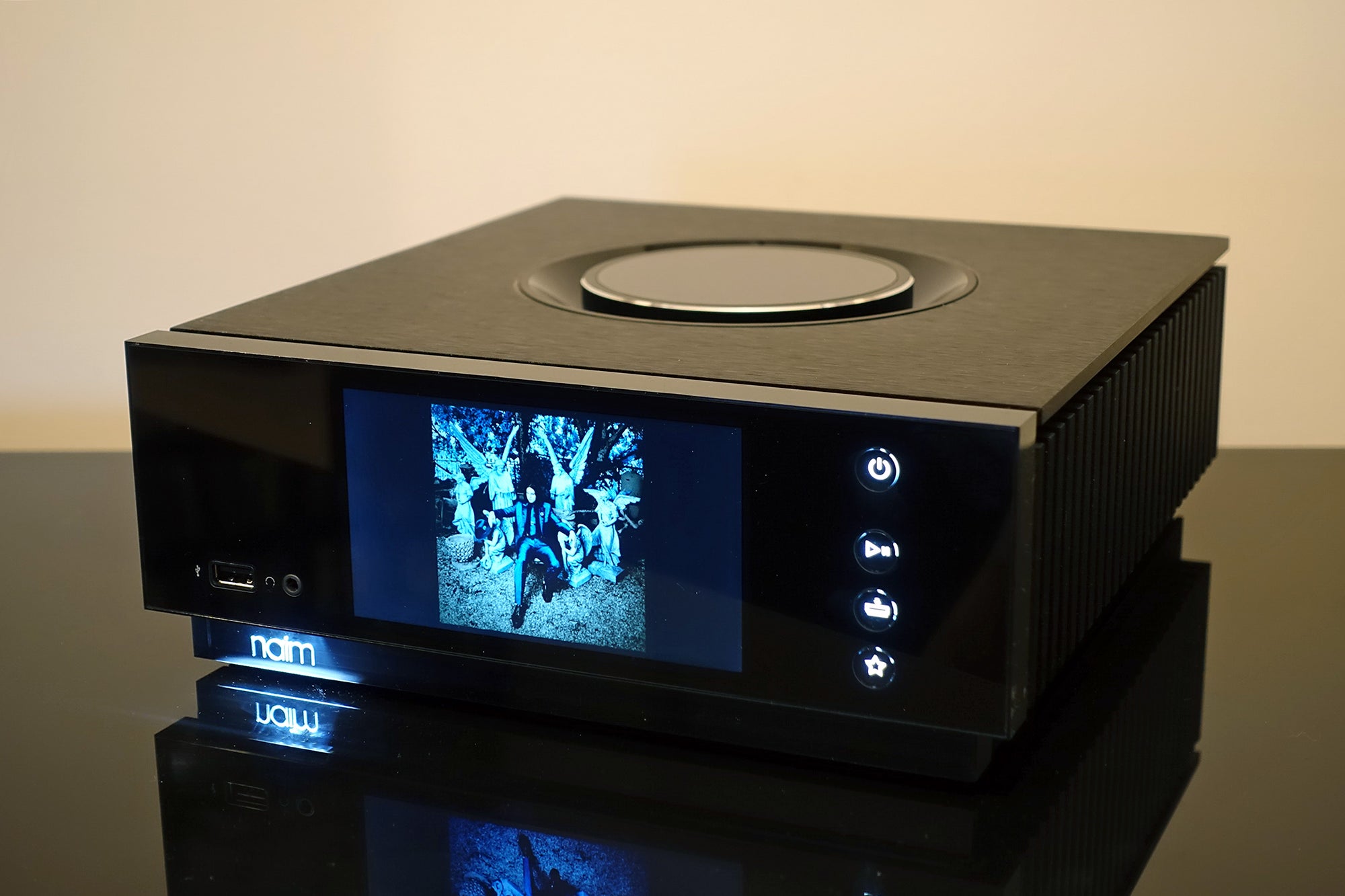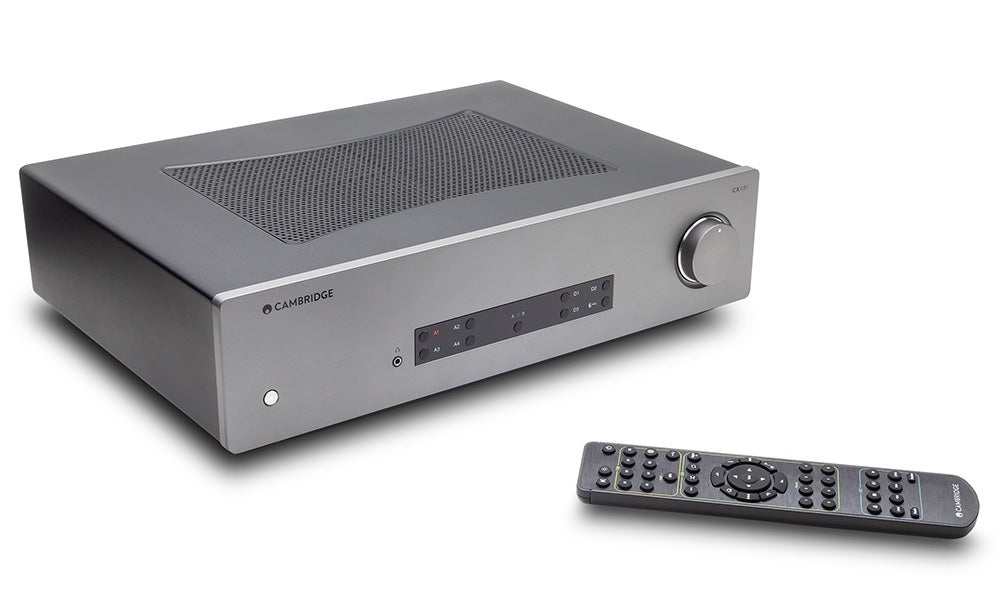Triangle AIO3 Review
A multi-room speaker with plenty get up and go
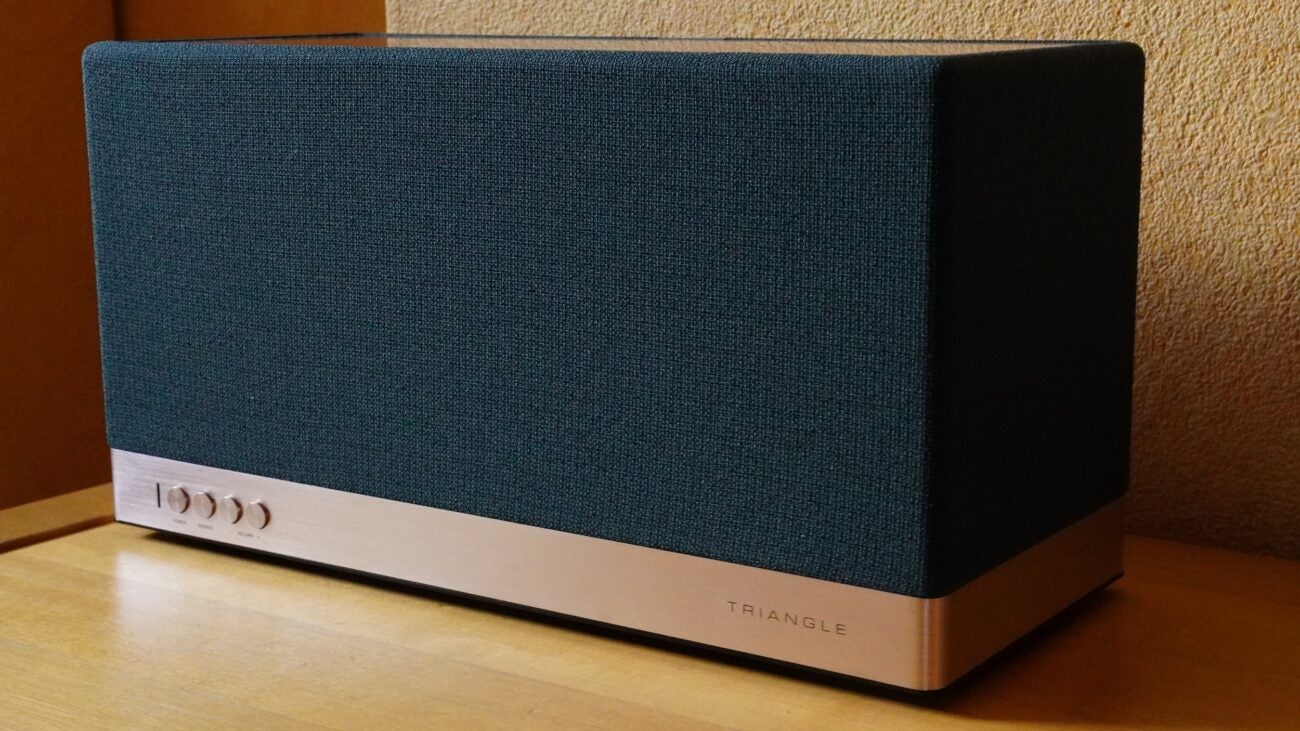
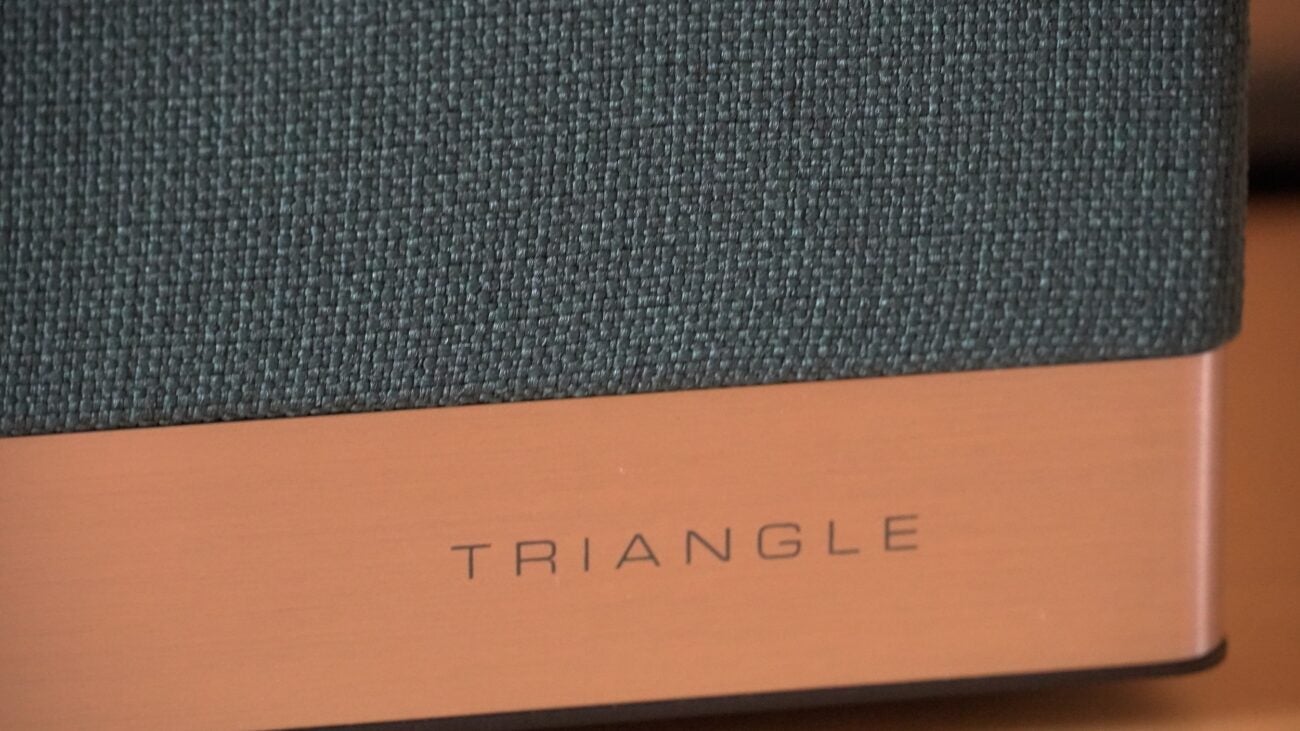

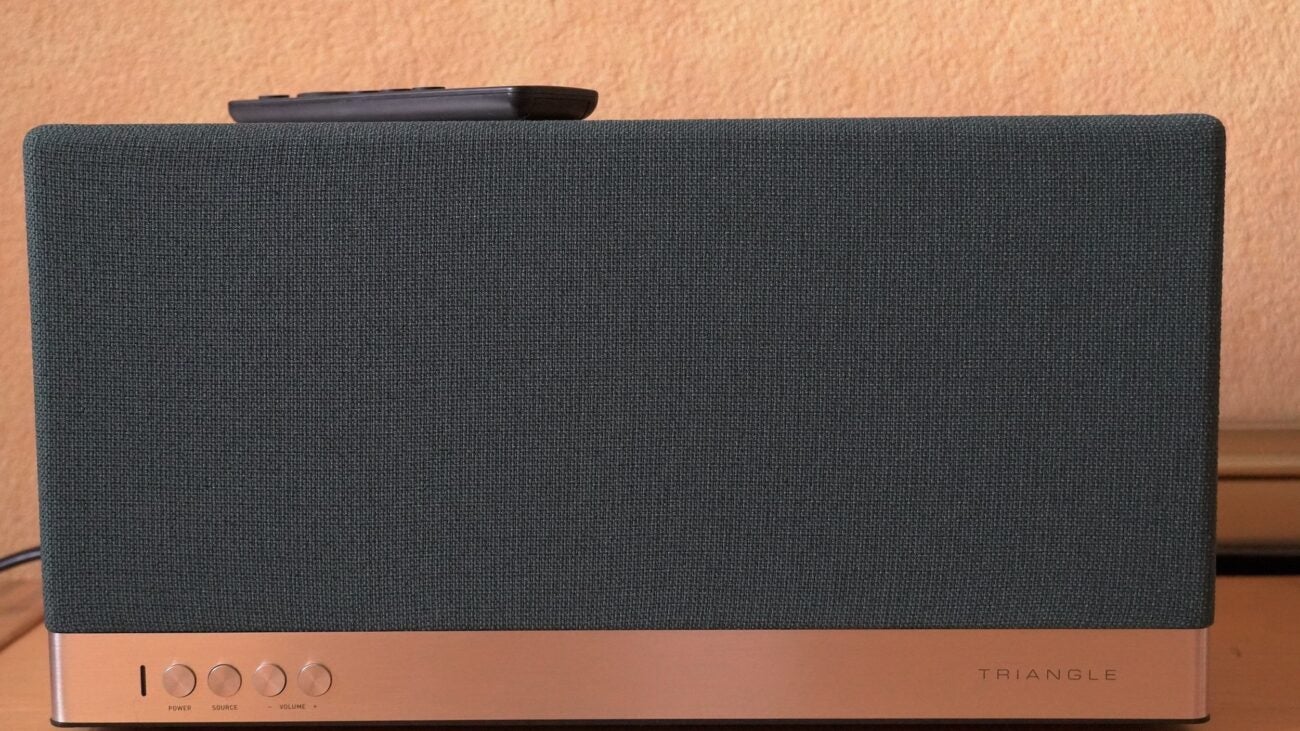
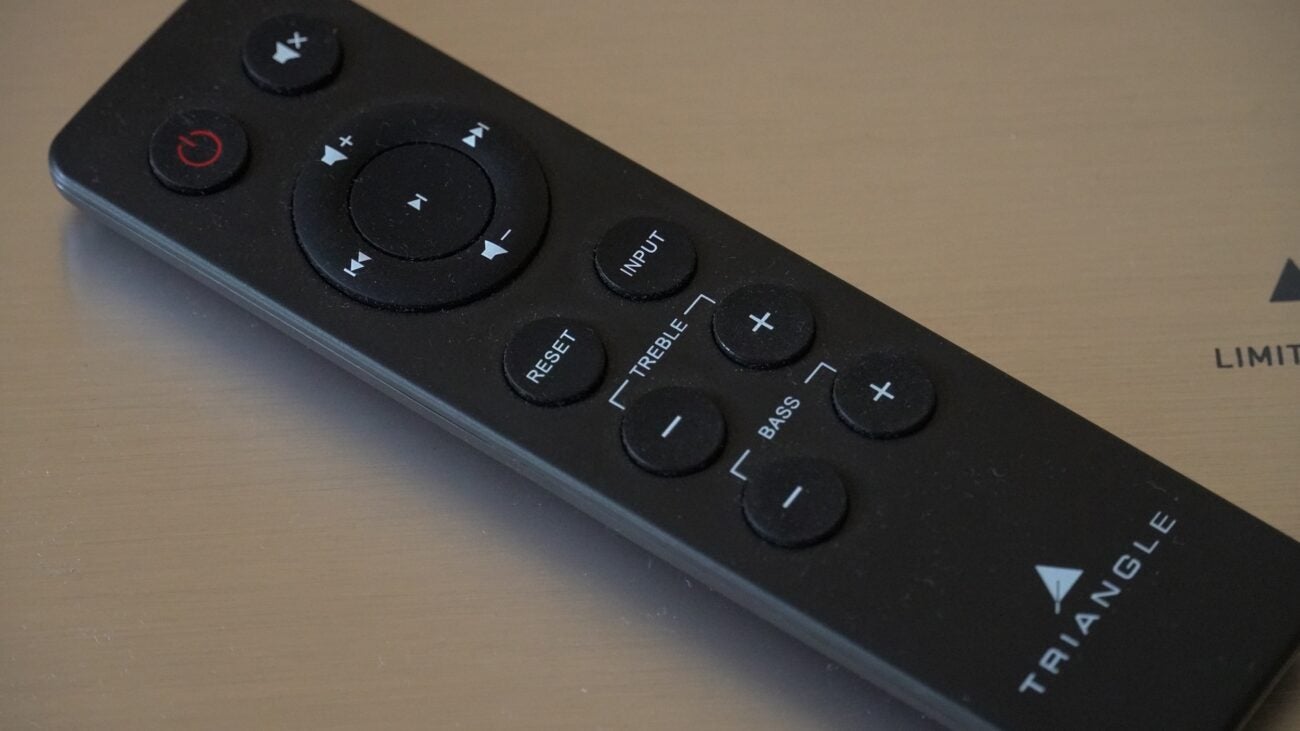

Verdict
A good rather than exceptional multi-room speaker, the Triangle AIO3 features the hallmarks of the French speaker brand’s sound with its energetic and punchy performance (at least on a Wi-Fi connection). It is short of the class leaders in terms of clarity and detail, as well as being restricted in terms of multi-room support too.
Pros
- Lively, energetic sound over Wi-Fi
- Great aesthetics
- Wi-Fi and Bluetooth support
Cons
- Could boast better sharpness and definition
- Rivals sound better
Key Features
- Audio supportSupports audio up to 24-bit/192kHz
- AppConnect to other AIO wireless speaker
- Wireless sourcesWi-Fi and aptX HD Bluetooth
Introduction
Triangle is a French brand renowned for making exciting, energetic-sounding hi-fi speakers. With the AIO3 it looks to achieve the same for its range of wireless speakers.
The AIO3 is part of Triangle’s AIO series, a speaker with multi-room capabilities that also supports Bluetooth, Internet radio and Hi-res audio streaming, serving as an all-in-one speaker.
It’s not short of competition, especially in a space where it’s rubbing shoulders with Sonos and Bluesound speakers. What does Triangle have up its sleeves to entice potential buyers? Here’s my verdict.
Design
- Classy looks
- Fairly big footprint
- Array of physical connections
The Triangle AIO3 measures at 19cm tall, 37cm wide and 15cm deep, tipping the scales at 5kg. This is not the type of speaker you’d move from one place to another like the Sonos Era 100 or Denon Home 150, moreso a speaker you’d find a dedicated space and keep there.
It comes in several different colourways: Green Forest, Red Ocher, Powder Pink, Frost White, Slate Black, Blue, Green, and Grey. There’s plenty of options to fit the décor of your room, and it’s a nice change from wireless speakers arriving in a black or white finish.
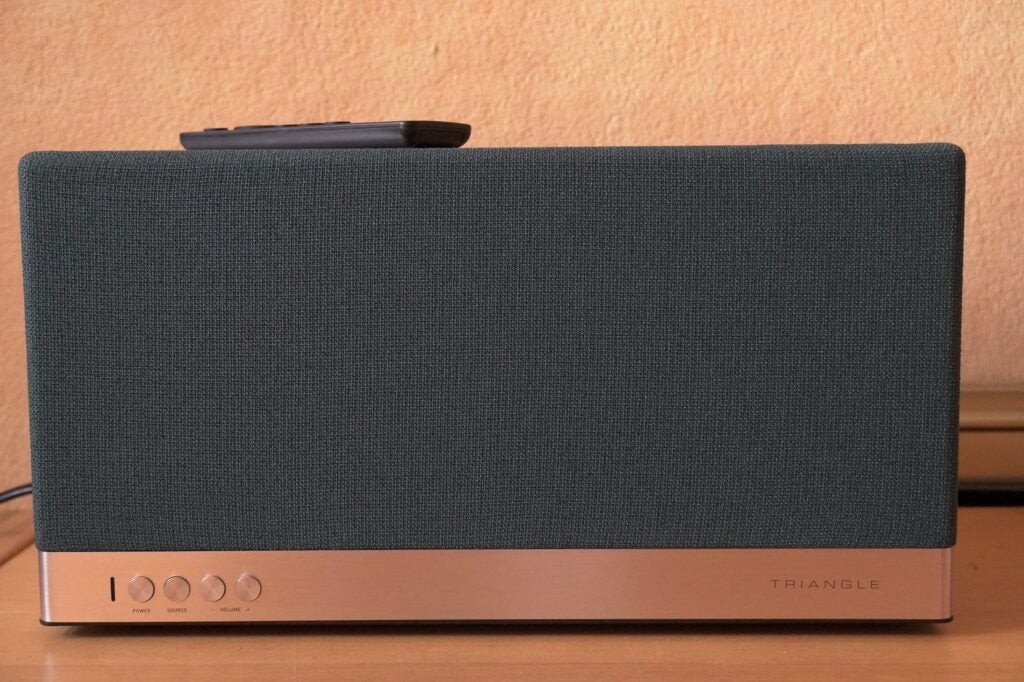
The colourway for this review sample is Green Forest, its midriff wrapped in a fabric from Scandinavian outfitters Gabriel that covers the internal wooden housing. On top and at the bottom is a brushed aluminium material in champagne gold, and when the light shines it gives the speaker a pleasing golden glow. Unlike some of the more out there designs such as the Bowers & Wilkins Zeppelin, the AIO3 is fundamentally a rectangular box, but it’s an elegant one.
Back to the bottom of the speaker and there are a series of buttons that covers power, source, and volume control, with an LED indicator that signals power on/off and which source is in use. There’s also an LED for volume control above, concealed behind the fabric mesh. That’s a smart way to integrate it, but whenever I’m to the side of the speaker, it becomes harder to see it.
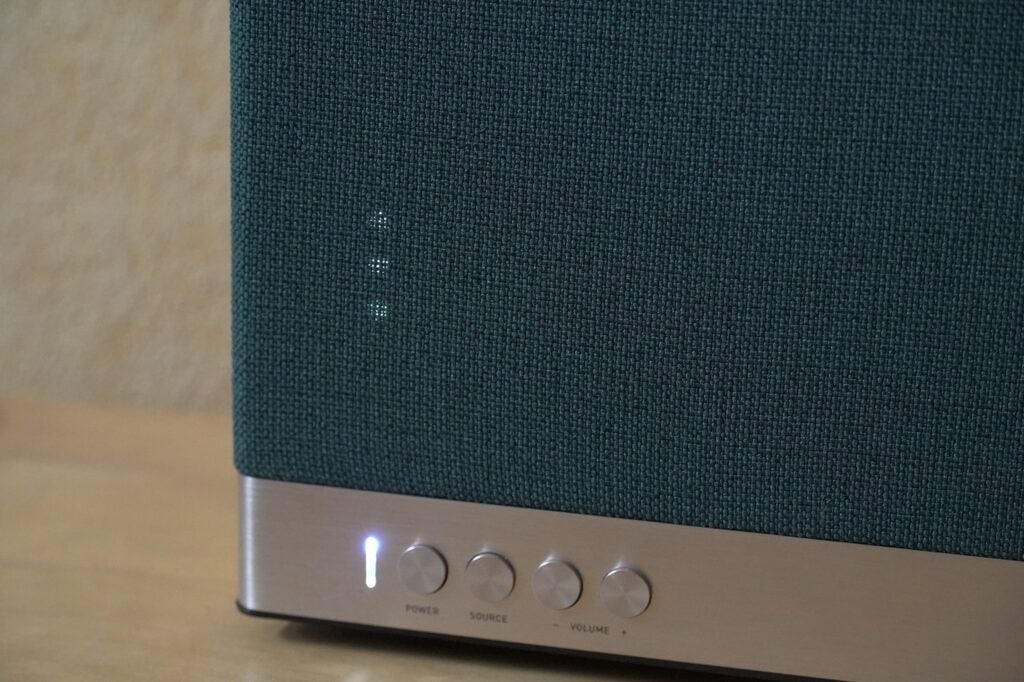
Around the back is a vent for reinforcing the AIO3’s bass levels. Place it near a wall and it’ll give low frequencies a boost, pull it away and you can expect a less powerful performance. There are various physical connections that include a 3.5mm aux input, USB 2.0, Ethernet, and a digital optical if there’s a desire to connect it to a source such as a TV.
The Triangle AIO3 comes with a zapper too, which feels a little plasticky in the hand, while the button inputs are stiff and clicky to press, and it relies on line of sight. Point it in another direction and nothing happens. There’s playback and volume control via a D-pad, source selection along with treble and bass adjustments. It’s a passable remote, and given the quality of the speaker’s aesthetics, it’s the one aspect that ought to be classier.
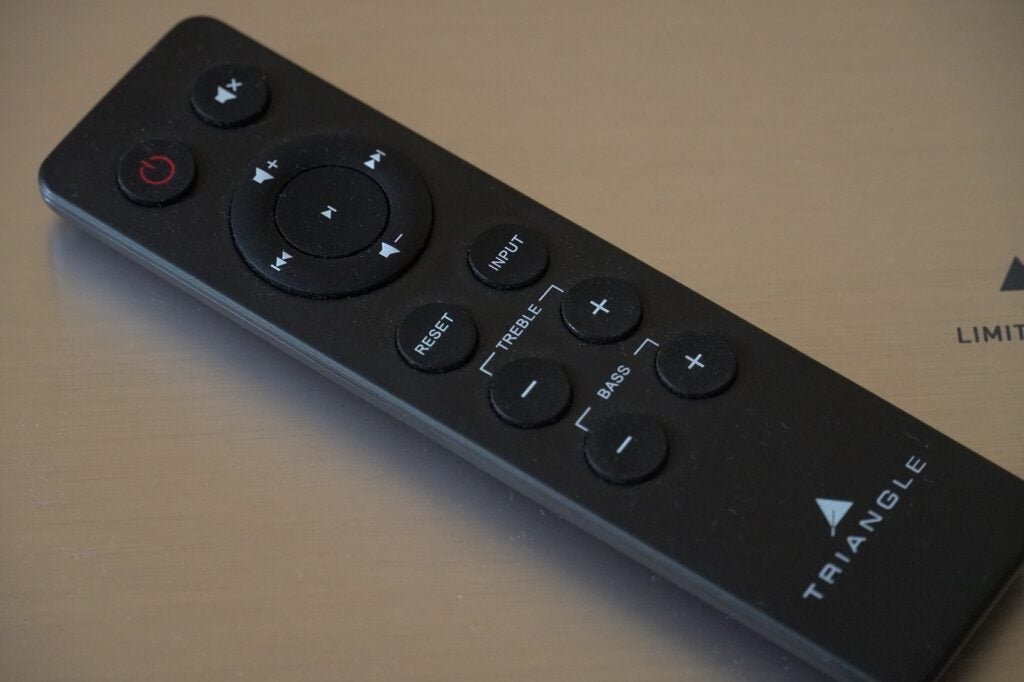
Features
- Only works in a AIO multi-room setup
- App support
- Audio support up to 24-bit/192kHz
The Triangle AIO3 is positioned as a multi-room speaker but it should be made clear this isn’t a wireless speaker that plays nice with other multi-room setups. If you’re going to buy this speaker, it’ll ‘speak’ to other models within Triangle’s AIO series (up to 12 devices are supported). There’s no Chromecast, AirPlay 2, Tidal Connect, or Alexa Multi-Room but it is compatible with Spotify Connect.
There is an app to play with (Triangle AIO) and this offers built-in integration with the likes of Deezer, Qobuz, Tidal, and Amazon Music, as well as Wangyiyun, which I’ve not heard of but is a Chinese ‘freemium’ music service also known as NetEase Cloud Music. Having these music services integrated means they can be operated through the AIO app alone rather than jumping from one app to another.
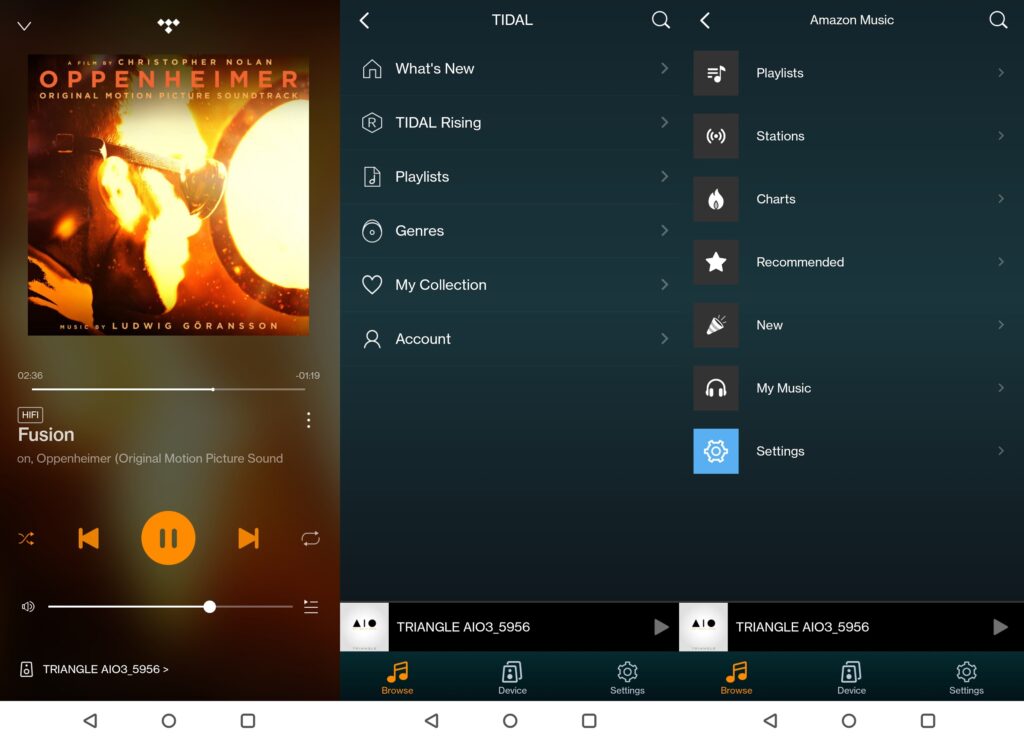
Other features include access to music stored on your mobile device, adding favourites (this only applies to songs on your device), creating presets (of which there are six), selecting sources, setting up multi-room playback, and adjusting the EQ (including a 3D Sound option which I’d recommend avoiding) and enabling an alarm clock.
The app is practically the same as the Audio Pro app, and it’s responsive enough in terms of navigation, though there are times I’m left seeing a spinning wheel as I enter a menu or a little lag when the album art refreshes after skipping a track. Visually there’s a basic vibe to the app’s looks but it gets the job done. You may notice other Wi-Fi enabled devices appear in the AIO app but if they’re not AIO speakers they won’t join up in a multi-room system.
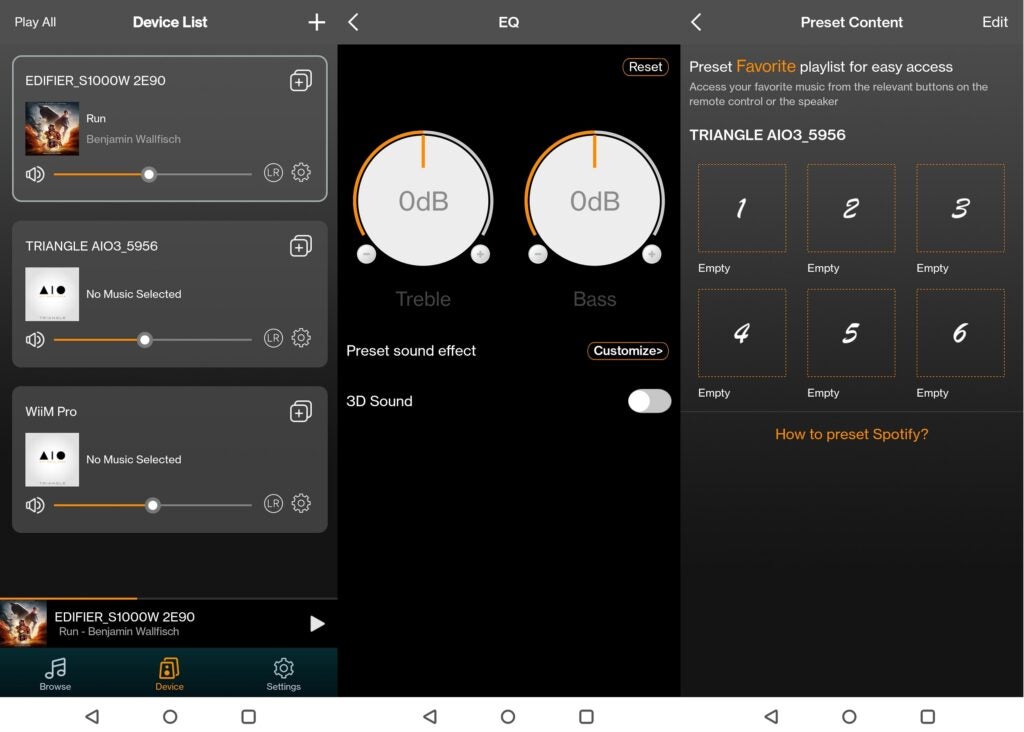
The Triangle AIO3 supports Bluetooth and Wi-Fi connections, the latter has support for audio up to 24-it/192kHz, while the former registers as aptX HD Bluetooth. File format support includes APE, FLAC, WAV, Apple Lossless, AAC, AAC-LC, HE- AAC, HE-AAC v2, MP3, and CBR/VBR.
Sound Quality
- Warm Bluetooth performance
- Sharper, detailed, livelier Wi-Fi sound
- Beaten for sharpness and clarity by rivals
Starting with Bluetooth and the Triangle AIO3 takes on a warm sonic character. It initially comes across a bass heavy – this could also be attributed to its placement close to a wall – but there’s a warmth and smoothness to the Triangle’s stereo setup (two 1-inch tweeters, two 3.9-inch woofers) that doesn’t speak so well to its claims of high fidelity.
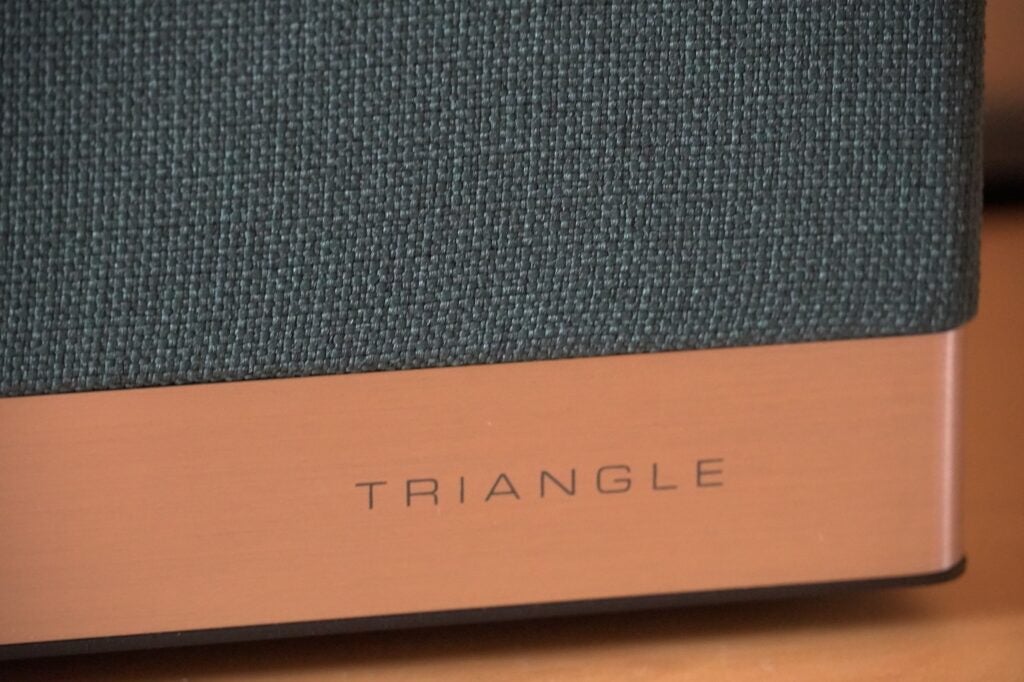
Right through the frequency range, the Triangle AIO3’s performance is suffused with warmth that makes it a not particularly bright listen at the top end. At the very least, the impact of the bass doesn’t affect midrange clarity. Vocals are smoothly described but the rest of the soundstage isn’t as well defined. As is common with wireless speakers, the volume for Bluetooth is much lower than the comparative level for Wi-Fi, requiring several nudges upwards.
Switch to Wi-Fi and there’s more credence to the AIO3’s high fidelity claims. The warmth fades for what I’d describe as a more neutral performance. Listening to Rick Smith’s Bullet Cut and comparing over Bluetooth and Wi-Fi, the latter reproduces high frequency notes with more clarity and brightness than the Bluetooth signal can manage.
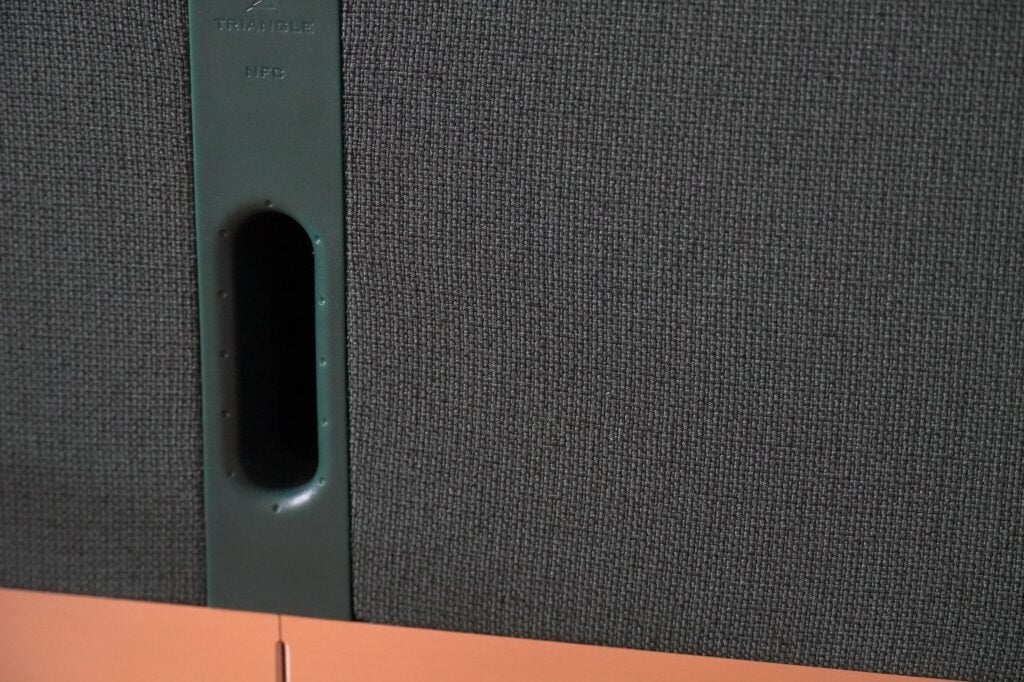
The stereo effect is clearer on Wi-Fi too, there’s a much better sense of scale and size to its sound, helped by the speaker’s Wi-Fi performance being louder than the Bluetooth from the get-go. It’s a sound that could easily fill a medium-sized room. Placing it against a wall can help beef up and load the low frequencies with more power too.
Wi-Fi listening sees a jump up in quality in pretty much every area. It’s a sharper, clearer and more spacious listen with improved levels of detail and dynamism when listening to Ludwig Göransson’s Oppenheimer soundtrack via Tidal. The low end has presence with decent punchiness, the speaker finds a better balance than it can with a Bluetooth connection.

Tonally it can sound quite sparse – there’s a hoariness to its presentation that can lead to the treble getting a little sparkly and peaky at higher volume levels. Though it is improved over Wi-Fi, the Triangle AIO3 is not the most detailed or defined performance I’ve ever heard, lacking a little sharpness, definition and extra few ounces of clarity that would give it more of a fighting chance against a price rival such as the Sonos Era 300.
Latest deals
Should you buy it?
For its energetic, room-filling sound
The Triangle AIO3 is not the most subtle speaker, but there’s energy and power behind its sound that makes for an entertaining performance.
There are better multi-room speakers
The Sonos Era 300 and Bluesound Pulse M sound better, have a wider range of features, and play with more multi-room systems than the Triangle does.
Final Thoughts
The Triangle AIO3 is your typical Triangle speaker: energetic, punchy, and loud. It’s also very stylish, more so than the industrial design of Sonos’ recent speakers and the slightly dour minimalism of the Denon Home series.
Its multi-room skills are neutered as this speaker only works with other AIO speakers in the home or if you have access to Spotify Connect. The lack of AirPlay, Chromecast, and even Tidal Connect seems a large oversight.
It’s up against tough competition in the Sonos Era 300 and Bluesound Pulse M, both of which sound better and offer wider capabilities whether it’s Dolby Atmos audio, slicker interfaces, and better overall sound. The Triangle AIO3 is a good multi-room speaker, but there are better alternatives out there.
How we test
We test every wireless speaker we review thoroughly over an extended period of time. We use industry standard tests to compare features properly. We’ll always tell you what we find. We never, ever, accept money to review a product.
Find out more about how we test in our ethics policy.
Tested across several weeks
Tested with real world use
FAQs
There’s no AirPlay 2 with the AIO3, nor is there any Tidal Connect or Chromecast streaming.



